Growing Calla Lilies - Calla Lily Care Guide
Beautiful and graceful calla lilies aren’t terribly fussy, and are an elegant addition to any garden where there’s full or partial sun.
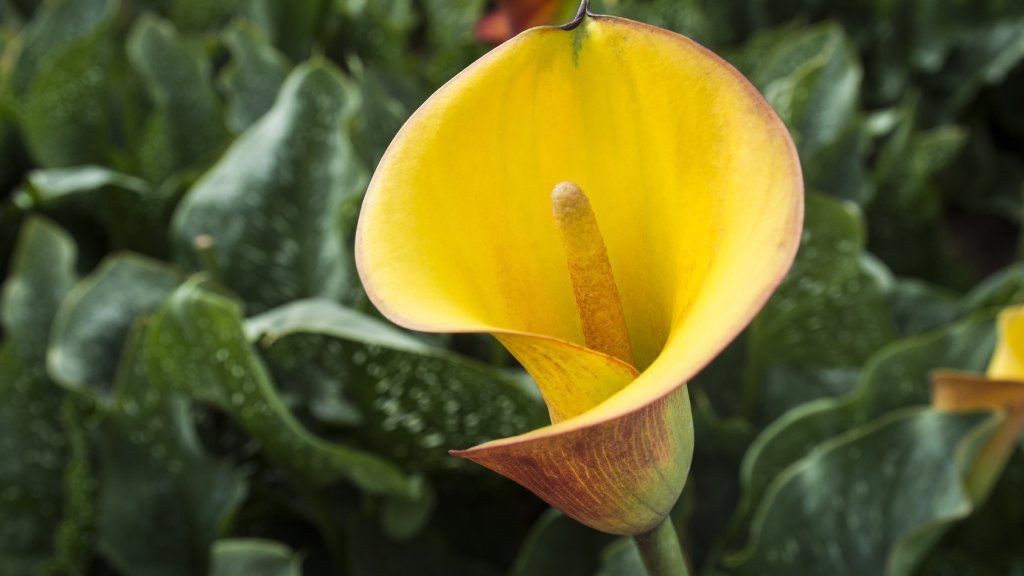
Quick Facts
Botanical name: Zantedeschia aetheopica
Height: 12-24 in. (30-61 cm.)
Spread: 18-24 in. (46-61 cm.)
Light: Full sun, part shade
Soil: Neutral, slightly acidic
Zones: 8-10
When to plant: Spring
Calla lilies provide a touch of the tropics to summer gardens. Though gardeners in far southern climates can grow these beautiful flowers year-round, most of us have to accept that they'll only grow as annuals.
The other option is to dig up plants each fall and overwinter them, then replant them each spring as you would any other summer garden bulbs. Keep reading to learn all the basics of growing calla lilies in your garden, no matter where you live.
Calla Lily Care
Calla lily plants make a beautiful addition to the ornamental landscape. Though the graceful white calla lily flowers are the most common, available cultivars come in a wide range of colors. Below, we will explore the basic needs of this stunning perennial in greater detail.
Light
Calla lilies grow best where they can receive part, or full sun, throughout the day. Ample light is essential to the production of flowers. Still, gardeners living in areas that are especially warm or receive intense sunlight may want to consider planting them in beds that are shaded throughout the hottest parts of the afternoon.
Water
Caring for calla lilies includes paying special attention to soil moisture. Indoor plants, as well as those grown directly in the garden, appreciate consistent moisture throughout the season in addition to adequate humidity.
In most regions, supplemental watering callas in the garden is not required. However, the plants can benefit from drip irrigation or soaker hoses in regions that are especially dry or prone to prolonged periods of drought.
Temperature & Humidity
Calla lily plants grow best where conditions are warm with temperatures of at least 70 F (21 C) during the day. Humidity in the environment also plays a key role in maintaining adequate levels of moisture. Calla lily flowers can tolerate high temperatures in most gardens, provided the humidity conditions are ideal. Extreme heat can be detrimental to the plant, specifically, in regions that are dry or arid.
Gardening tips, videos, info and more delivered right to your inbox!
Sign up for the Gardening Know How newsletter today and receive a free copy of our e-book "How to Grow Delicious Tomatoes".
Soil
Calla lilies should be planted into well-amended beds with good drainage. Since they are quite adaptable, the rhizomes will grow well under a wide range of soil conditions, including those that consist of sand or clay. Their ideal garden soil should be neutral or slightly acidic with a pH of 5.6 to 6.5. To successfully grow callas indoors, the plants can be placed into containers filled with high-quality potting mix.
Fertilizer
Calla lilies require annual feeding to keep them looking their best. Well-balanced fertilizers can be used any time before the plants start to flower. Both granulated and liquid feeds are good options, depending upon one's specific needs. As with most perennials, make certain to avoid using fertilizer after the plant has finished blooming
Problems, Pests & Diseases
While care for calla lilies is relatively simple, there are some common problems that gardeners need to be aware of. Notable among these are diseases that directly affect the plants' rhizomes and/or foliage. Rot, powdery mildew, and various kinds of wilt may be the direct result of excess moisture. Several types of pests may also target calla lily plants. Slugs and Japanese beetles being the most problematic.
Pruning
Calla lily flowers can be removed as they begin to fade from the plant. Deadheading each stem prevents the production of seed, as well as encouraging bloom. Each spent flower stem should be removed carefully all the way back to the base of the plant. Dead or yellowing foliage can also be pruned in this manner, helping to maintain a healthy and tidy appearance within garden beds.
Propagation
Though it is possible to grow calla lily plants from seed, most gardeners prefer to divide those that have already established themselves in the garden. This can occur every 3-5 years, and will result in flowers that are identical to the parent plant. This process should be done in the fall while each plant is dormant. After carefully lifting rhizomes from the soil the roots can be cut apart. New divisions should have at least one healthy, viable growing eye.
Repotting
To perform their best, calla lilies that have outgrown their containers will need to be repotted. This should occur in the fall, when the plants are dormant. Repot calla lilies every 1-2 years, allowing for division and replanting into new or larger containers.
Varieties
Here is a list of some common varieties of calla lily.
- Crystal Clear Calla Lily
- Garnet Glow Calla Lily
- Odessa Calla Lily
- Morning Sun Calla Lily
- Picasso Calla Lily
Frequently Asked Questions
Are calla lilies toxic?
All parts of the calla lily plant are considered to be extremely toxic. Calcium oxalate and other chemical compounds may be fatal if ingested. Extreme caution should be taken when they are planted near children and pets, as well as when being handled by growers.

Nikki Tilley has been gardening for nearly three decades. The former Senior Editor and Archivist of Gardening Know How, Nikki has also authored six gardening books.
-
 Why Are My Seedlings Wilting? 6 Common Causes – And How To Save Them
Why Are My Seedlings Wilting? 6 Common Causes – And How To Save ThemWilted seedlings are a definite sign that something is not right. Learn how to diagnose the problem and bring baby plants back from the brink.
By Teo Spengler
-
 Bugged About Strawberry Pests? 6 Common Pests, Plus How To Protect Your Precious Strawbs
Bugged About Strawberry Pests? 6 Common Pests, Plus How To Protect Your Precious StrawbsStrawberry plants looking a little under the weather and not sure why? Check to make sure they haven’t come a-cropper to one of these classic strawberry pests
By Tonya Barnett
-
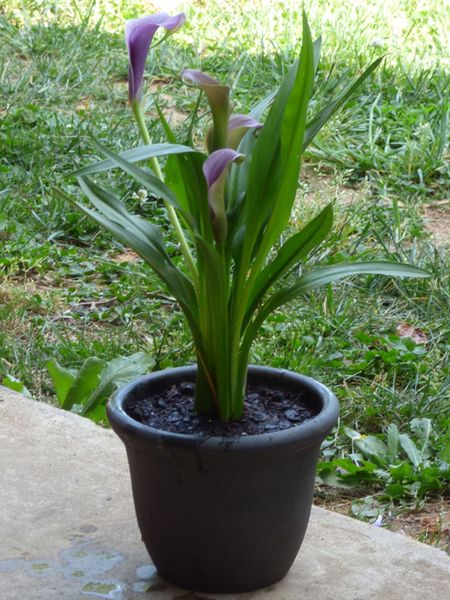 Planting A Calla Lily In A Pot: Care Of Container Grown Calla Lilies
Planting A Calla Lily In A Pot: Care Of Container Grown Calla LiliesCalla lilies are hardy in zones of 8-11 - but may survive zone 7 with protection. They also bloom primarily in summer. Because of bloom time and plant hardiness, many gardeners find it easier to grow potted calla lily plants. Click this article to learn more.
By Darcy Larum
-
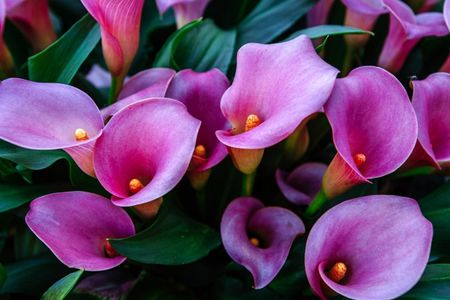 Calla Lily Hardiness: Will Calla Lilies Come Back In Spring
Calla Lily Hardiness: Will Calla Lilies Come Back In SpringCalla lily is a top choice for gifts and if you find yourself having been gifted one, you may be wondering what to do with it next. Is keeping callas year round possible or is it a one-time beauty? Let us help you figure it out. Click this article to learn more.
By Mary Ellen Ellis
-
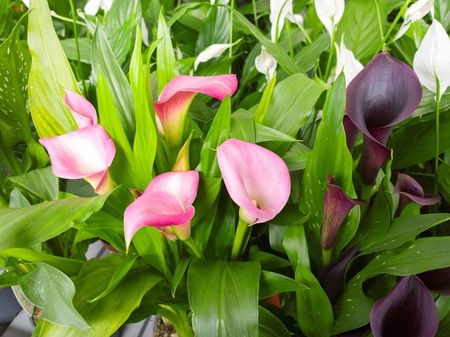 Calla Lily Varieties – Information About Different Calla Lily Plants
Calla Lily Varieties – Information About Different Calla Lily PlantsCalla lily plants produce classically beautiful flowers, prized for their elegant, trumpet-like shape. The white calla lily is one of the most well-known and popular varieties, but if you're a fan, check out the many other colorful options. This article will help.
By Mary Ellen Ellis
-
 Feeding Calla Lilies : How To Fertilize Calla Lily Plants
Feeding Calla Lilies : How To Fertilize Calla Lily PlantsCalla lilies are heavy water users and require plenty of the right kind of nutrients for maximum flowering and healthy growth. Some tips on how to fertilize calla lily will ensure beautiful flowers and erect, vigorous plants. This article will help with that.
By Bonnie L. Grant
-
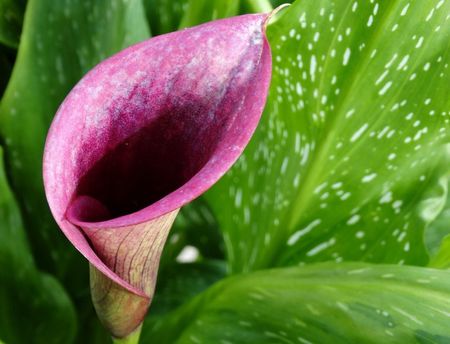 Calla Lily Watering: How Much Water Do Calla Lilies Need
Calla Lily Watering: How Much Water Do Calla Lilies NeedWhile calla lily is a relatively low-maintenance plant, it won't tolerate excessively dry conditions or soggy, poorly drained soil. You can learn more about calla lily water requirements in this article. Click here for additional information.
By Mary H. Dyer
-
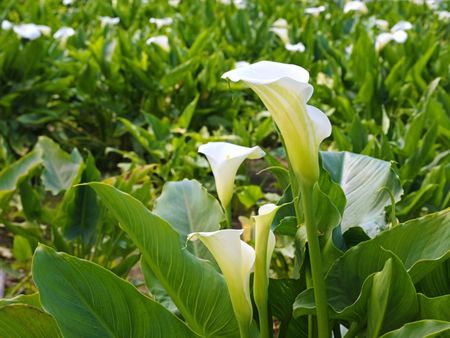 Calla Buds Not Blooming – Reasons Why Calla Lily Buds Don’t Open
Calla Buds Not Blooming – Reasons Why Calla Lily Buds Don’t OpenGetting buds to open on callas is not typically difficult, but there may be a few easy-fix problems going on with your plant. Tweaking one or two things should help you get your blooms back. This article will help with that.
By Mary Ellen Ellis
-
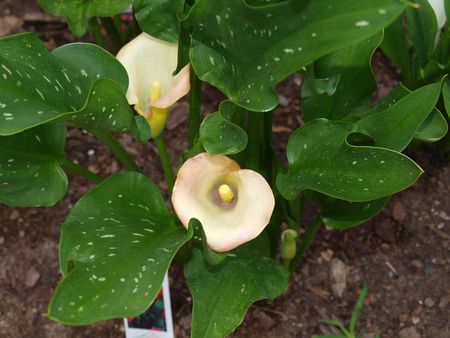 Transplanting Calla Lilies: How To Transplant Calla Lilies Outside
Transplanting Calla Lilies: How To Transplant Calla Lilies OutsideWith their handsome, tropical foliage and dramatic flowers, calla lilies add a hint of mystery and elegance to the garden. This article tells you how to transplant calla lilies outside or into pots for indoor or outdoor culture.
By Jackie Carroll
-
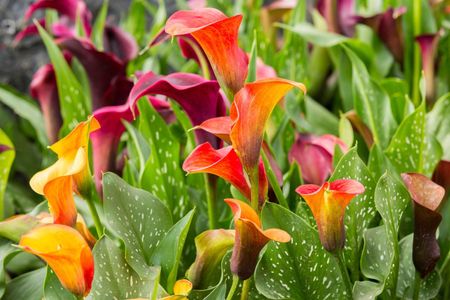 Dividing Calla Lilies - How And When To Divide Callas
Dividing Calla Lilies - How And When To Divide CallasCalla lilies are handsome enough to grow for their foliage alone, but when the bold, single-petaled flowers unfurl, they are sure to attract attention. Learn how to divide these dramatic, tropical plants in this article.
By Jackie Carroll

